-
308 results in Exploration of MedicineSort byMost Viewed
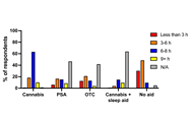 A large-scale survey of cannabis use for sleep: preferred products and perceived effects in comparison to over-the-counter and prescription sleep aidsOpen AccessOriginal ArticleAim: Cannabis use for sleep-related problems is on the rise; however, little is known about the cannabis products people are using for sleep or the perceived effects of cannabis in comparison to [...] Read more.Amanda Stueber, Carrie CuttlerPublished: October 25, 2023 Explor Med. 2023;4:709–719
A large-scale survey of cannabis use for sleep: preferred products and perceived effects in comparison to over-the-counter and prescription sleep aidsOpen AccessOriginal ArticleAim: Cannabis use for sleep-related problems is on the rise; however, little is known about the cannabis products people are using for sleep or the perceived effects of cannabis in comparison to [...] Read more.Amanda Stueber, Carrie CuttlerPublished: October 25, 2023 Explor Med. 2023;4:709–719
DOI: https://doi.org/10.37349/emed.2023.00171
This article belongs to the special issue Beyond Weed: Clinical Applications of Cannabis and Cannabinoids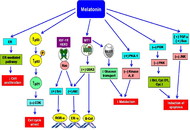 The potential anti-cancer effects of melatonin on breast cancerOpen AccessReviewMelatonin is the primary hormone of the pineal gland that is secreted at night. It regulates many physiological functions, including the sleep-wake cycle, gonadal activity, free radical scavenging, [...] Read more.Naba Kumar Das, Saptadip SamantaPublished: February 25, 2022 Explor Med. 2022;3:112–127
The potential anti-cancer effects of melatonin on breast cancerOpen AccessReviewMelatonin is the primary hormone of the pineal gland that is secreted at night. It regulates many physiological functions, including the sleep-wake cycle, gonadal activity, free radical scavenging, [...] Read more.Naba Kumar Das, Saptadip SamantaPublished: February 25, 2022 Explor Med. 2022;3:112–127
DOI: https://doi.org/10.37349/emed.2022.00078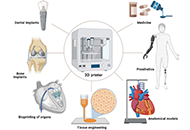 3D printing in biomedicine: advancing personalized care through additive manufacturingOpen AccessReviewThe integration of three-dimensional (3D) printing techniques into the domains of biomedical research and personalized medicine highlights the evolving paradigm shifts within contemporary healthcare [...] Read more.Kalyani Pathak ... Barbie BorthakurPublished: December 29, 2023 Explor Med. 2023;4:1135–1167
3D printing in biomedicine: advancing personalized care through additive manufacturingOpen AccessReviewThe integration of three-dimensional (3D) printing techniques into the domains of biomedical research and personalized medicine highlights the evolving paradigm shifts within contemporary healthcare [...] Read more.Kalyani Pathak ... Barbie BorthakurPublished: December 29, 2023 Explor Med. 2023;4:1135–1167
DOI: https://doi.org/10.37349/emed.2023.00200
This article belongs to the special issue Exploration of 3D and 4D Printing in the Biomedical and Personalized Medicine Fields: Merits and Challenges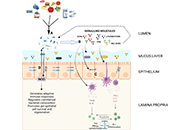 The gut microbiome and the immune systemOpen AccessReviewThe human body contains trillions of microbes which generally live in symbiosis with the host. The interaction of the gut microbiome with elements of the host immune system has far-reaching effects [...] Read more.Tenzin Choden, Nathaniel Aviv CohenPublished: May 31, 2022 Explor Med. 2022;3:219–233
The gut microbiome and the immune systemOpen AccessReviewThe human body contains trillions of microbes which generally live in symbiosis with the host. The interaction of the gut microbiome with elements of the host immune system has far-reaching effects [...] Read more.Tenzin Choden, Nathaniel Aviv CohenPublished: May 31, 2022 Explor Med. 2022;3:219–233
DOI: https://doi.org/10.37349/emed.2022.00087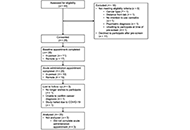 Cannabis use in cancer patients: acute and sustained associations with pain, cognition, and quality of lifeOpen AccessOriginal ArticleAim: Given the myriad of negative sequalae associated with cancer and its treatment, the palliative use of cannabis by cancer patients is increasingly of special interest. This research sought to e [...] Read more.Gregory Giordano ... Angela D. BryanPublished: April 26, 2023 Explor Med. 2023;4:254–271
Cannabis use in cancer patients: acute and sustained associations with pain, cognition, and quality of lifeOpen AccessOriginal ArticleAim: Given the myriad of negative sequalae associated with cancer and its treatment, the palliative use of cannabis by cancer patients is increasingly of special interest. This research sought to e [...] Read more.Gregory Giordano ... Angela D. BryanPublished: April 26, 2023 Explor Med. 2023;4:254–271
DOI: https://doi.org/10.37349/emed.2023.00138
This article belongs to the special issue Beyond Weed: Clinical Applications of Cannabis and Cannabinoids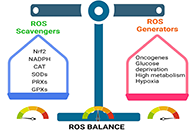 Reactive oxygen species in cancer progression and its role in therapeuticsOpen AccessReviewThe redox status in pathogenesis is critically regulated by careful balance between the generation of reactive oxygen species (ROS) and their elimination. Increased ROS level above the cellular tole [...] Read more.Ranjeet Singh, Partha Pratim MannaPublished: February 22, 2022 Explor Med. 2022;3:43–57
Reactive oxygen species in cancer progression and its role in therapeuticsOpen AccessReviewThe redox status in pathogenesis is critically regulated by careful balance between the generation of reactive oxygen species (ROS) and their elimination. Increased ROS level above the cellular tole [...] Read more.Ranjeet Singh, Partha Pratim MannaPublished: February 22, 2022 Explor Med. 2022;3:43–57
DOI: https://doi.org/10.37349/emed.2022.00073
This article belongs to the special issue Reactive Oxygen Species (ROS) in Pathophysiological Conditions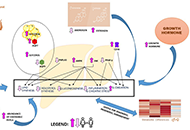 Sex differences in non-alcoholic fatty liver disease: hints for future management of the diseaseOpen AccessReviewNon-alcoholic fatty liver disease (NAFLD) remains a major cause of chronic liver disease worldwide. Despite extensive studies, the heterogeneity of the risk factors as well as different disease mechanisms complicate the goals towa [...] Read more.Noel C. Salvoza ... Natalia RossoPublished: April 30, 2020 Explor Med. 2020;1:51–74
Sex differences in non-alcoholic fatty liver disease: hints for future management of the diseaseOpen AccessReviewNon-alcoholic fatty liver disease (NAFLD) remains a major cause of chronic liver disease worldwide. Despite extensive studies, the heterogeneity of the risk factors as well as different disease mechanisms complicate the goals towa [...] Read more.Noel C. Salvoza ... Natalia RossoPublished: April 30, 2020 Explor Med. 2020;1:51–74
DOI: https://doi.org/10.37349/emed.2020.00005
This article belongs to the special issue Exploring NAFLD/NASH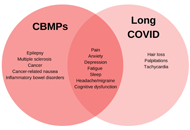 Cannabis-based medicinal products (CBMPs) for the treatment of Long COVID symptoms: current and potential applicationsOpen AccessReviewSevere acute respiratory syndrome coronavirus-2 (SARS-CoV-2) infection can result in a range of persistent symptoms impacting everyday functioning for a considerable proportion of patients, a condit [...] Read more.Hannah Thurgur ... David J. NuttPublished: August 31, 2023 Explor Med. 2023;4:487–503
Cannabis-based medicinal products (CBMPs) for the treatment of Long COVID symptoms: current and potential applicationsOpen AccessReviewSevere acute respiratory syndrome coronavirus-2 (SARS-CoV-2) infection can result in a range of persistent symptoms impacting everyday functioning for a considerable proportion of patients, a condit [...] Read more.Hannah Thurgur ... David J. NuttPublished: August 31, 2023 Explor Med. 2023;4:487–503
DOI: https://doi.org/10.37349/emed.2023.00158
This article belongs to the special issue Beyond Weed: Clinical Applications of Cannabis and Cannabinoids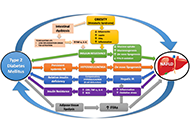 Nonalcoholic fatty liver disease and type 2 diabetes: pathophysiological mechanisms shared between the two faces of the same coinOpen AccessReviewThe pathophysiological mechanisms underlying the close relationship between nonalcoholic fatty liver disease (NAFLD) and type 2 diabetes mellitus (T2DM) are multiple, complex and only partially known. The purpose of this paper was [...] Read more.Carlo Acierno ... Ferdinando Carlo SassoPublished: October 30, 2020 Explor Med. 2020;1:287–306
Nonalcoholic fatty liver disease and type 2 diabetes: pathophysiological mechanisms shared between the two faces of the same coinOpen AccessReviewThe pathophysiological mechanisms underlying the close relationship between nonalcoholic fatty liver disease (NAFLD) and type 2 diabetes mellitus (T2DM) are multiple, complex and only partially known. The purpose of this paper was [...] Read more.Carlo Acierno ... Ferdinando Carlo SassoPublished: October 30, 2020 Explor Med. 2020;1:287–306
DOI: https://doi.org/10.37349/emed.2020.00019
This article belongs to the special issue Exploring NAFLD/NASH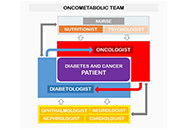 Type 2 diabetes and cancer: problems and suggestions for best patient managementOpen AccessReviewDiabetes and cancer are widespread worldwide and the number of subjects presenting both diseases increased over the years. The management of cancer patients having diabetes represents a challenge not only because of the complexity [...] Read more.Agostino Milluzzo ... Laura SciaccaPublished: August 31, 2020 Explor Med. 2020;1:184–204
Type 2 diabetes and cancer: problems and suggestions for best patient managementOpen AccessReviewDiabetes and cancer are widespread worldwide and the number of subjects presenting both diseases increased over the years. The management of cancer patients having diabetes represents a challenge not only because of the complexity [...] Read more.Agostino Milluzzo ... Laura SciaccaPublished: August 31, 2020 Explor Med. 2020;1:184–204
DOI: https://doi.org/10.37349/emed.2020.00013
This article belongs to the special issue Exploring Type 2 Diabetes Mellitus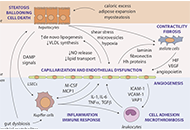 Nonalcoholic fatty liver disease and portal hypertensionOpen AccessReviewNonalcoholic fatty liver disease (NAFLD) is a substantial and growing problem worldwide and has become the second most common indication for liver transplantation as it may progress to cirrhosis and develop complications from port [...] Read more.Marvin Ryou ... Gyorgy BaffyPublished: June 29, 2020 Explor Med. 2020;1:149–169
Nonalcoholic fatty liver disease and portal hypertensionOpen AccessReviewNonalcoholic fatty liver disease (NAFLD) is a substantial and growing problem worldwide and has become the second most common indication for liver transplantation as it may progress to cirrhosis and develop complications from port [...] Read more.Marvin Ryou ... Gyorgy BaffyPublished: June 29, 2020 Explor Med. 2020;1:149–169
DOI: https://doi.org/10.37349/emed.2020.00011
This article belongs to the special issue Exploring NAFLD/NASH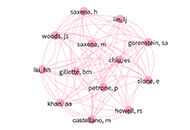 Unveiling the role of artificial intelligence for wound assessment and wound healing predictionOpen AccessReviewWound healing is a very dynamic and complex process as it involves the patient, wound-level parameters, as well as biological, environmental, and socioeconomic factors. Its process includes hemostas [...] Read more.Dinh T. P. Le, Tuan D. PhamPublished: August 31, 2023 Explor Med. 2023;4:589–611
Unveiling the role of artificial intelligence for wound assessment and wound healing predictionOpen AccessReviewWound healing is a very dynamic and complex process as it involves the patient, wound-level parameters, as well as biological, environmental, and socioeconomic factors. Its process includes hemostas [...] Read more.Dinh T. P. Le, Tuan D. PhamPublished: August 31, 2023 Explor Med. 2023;4:589–611
DOI: https://doi.org/10.37349/emed.2023.00163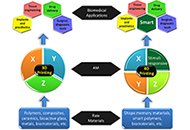 3D and 4D printing of biomedical materials: current trends, challenges, and future outlookOpen AccessReviewThree-dimensional (3D) and four-dimensional (4D) printing have emerged as the next-generation fabrication technologies, covering a broad spectrum of areas, including construction, medicine, transpor [...] Read more.Gayan A. Appuhamillage ... Achintha WijenayakePublished: February 06, 2024 Explor Med. 2024;5:17–47
3D and 4D printing of biomedical materials: current trends, challenges, and future outlookOpen AccessReviewThree-dimensional (3D) and four-dimensional (4D) printing have emerged as the next-generation fabrication technologies, covering a broad spectrum of areas, including construction, medicine, transpor [...] Read more.Gayan A. Appuhamillage ... Achintha WijenayakePublished: February 06, 2024 Explor Med. 2024;5:17–47
DOI: https://doi.org/10.37349/emed.2024.00203
This article belongs to the special issue Exploration of 3D and 4D Printing in the Biomedical and Personalized Medicine Fields: Merits and Challenges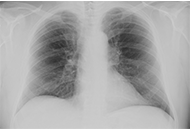 Perspectives of nonalcoholic fatty liver disease research: a personal point of viewOpen AccessReviewRational government of patient fluxes from primary care to hepatology clinic is a priority of nonalcoholic fatty liver disease (NAFLD) research. Estimating pre-test probability of disease, risk of fibrosis progression, and exclusi [...] Read more.Amedeo Lonardo, Stefano BallestriPublished: June 29, 2020 Explor Med. 2020;1:85–107
Perspectives of nonalcoholic fatty liver disease research: a personal point of viewOpen AccessReviewRational government of patient fluxes from primary care to hepatology clinic is a priority of nonalcoholic fatty liver disease (NAFLD) research. Estimating pre-test probability of disease, risk of fibrosis progression, and exclusi [...] Read more.Amedeo Lonardo, Stefano BallestriPublished: June 29, 2020 Explor Med. 2020;1:85–107
DOI: https://doi.org/10.37349/emed.2020.00007
This article belongs to the special issue Exploring NAFLD/NASH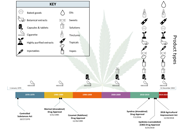 A U.S. Food and Drug Administration perspective on cannabis research and drug developmentOpen AccessPerspectiveSince the early 1970s, the U.S. Food and Drug Administration (FDA) has received over 800 investigational new drug applications (INDs) for, and pre-INDs pertaining to, research of cannabis or cannabi [...] Read more.Cassandra L. Taylor, Schuyler A. PruynPublished: October 31, 2023 Explor Med. 2023;4:813–821
A U.S. Food and Drug Administration perspective on cannabis research and drug developmentOpen AccessPerspectiveSince the early 1970s, the U.S. Food and Drug Administration (FDA) has received over 800 investigational new drug applications (INDs) for, and pre-INDs pertaining to, research of cannabis or cannabi [...] Read more.Cassandra L. Taylor, Schuyler A. PruynPublished: October 31, 2023 Explor Med. 2023;4:813–821
DOI: https://doi.org/10.37349/emed.2023.00179
This article belongs to the special issue Beyond Weed: Clinical Applications of Cannabis and Cannabinoids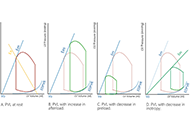 Understanding cardiac systolic performance beyond left ventricular ejection fractionOpen AccessReviewLeft ventricular ejection fraction is the critical parameter used for heart failure classification, decision making and assessing prognosis. It is defined as a volumetric ratio and is essentially a composite of arterial and ventri [...] Read more.Elena-Laura Antohi, Ovidiu ChioncelPublished: April 30, 2020 Explor Med. 2020;1:75–84
Understanding cardiac systolic performance beyond left ventricular ejection fractionOpen AccessReviewLeft ventricular ejection fraction is the critical parameter used for heart failure classification, decision making and assessing prognosis. It is defined as a volumetric ratio and is essentially a composite of arterial and ventri [...] Read more.Elena-Laura Antohi, Ovidiu ChioncelPublished: April 30, 2020 Explor Med. 2020;1:75–84
DOI: https://doi.org/10.37349/emed.2020.00006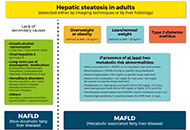 The diagnostic conundrum in non-alcoholic fatty liver diseaseOpen AccessReviewNon-alcoholic fatty liver disease (NAFLD) has become the most common liver alteration worldwide. It encompasses a spectrum of disorders that range from simple steatosis to a progressive form, defined non-alcoholic steatohepatitis [...] Read more.Valerio Rosato ... Marcello PersicoPublished: October 30, 2020 Explor Med. 2020;1:259–286
The diagnostic conundrum in non-alcoholic fatty liver diseaseOpen AccessReviewNon-alcoholic fatty liver disease (NAFLD) has become the most common liver alteration worldwide. It encompasses a spectrum of disorders that range from simple steatosis to a progressive form, defined non-alcoholic steatohepatitis [...] Read more.Valerio Rosato ... Marcello PersicoPublished: October 30, 2020 Explor Med. 2020;1:259–286
DOI: https://doi.org/10.37349/emed.2020.00018
This article belongs to the special issue Exploring NAFLD/NASH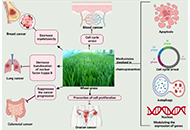 Nutritional prospects of wheatgrass (Triticum aestivum) and its effects in treatment and chemopreventionOpen AccessReviewNutraceuticals are organic and traditional foods consumed nowadays to maintain a healthy lifestyle and get rid of lifestyle diseases like obesity, cancer, diabetes, hypertension, etc. Globally, herb [...] Read more.Neha Minocha ... Parijat PandeyPublished: October 12, 2022 Explor Med. 2022;3:432–442
Nutritional prospects of wheatgrass (Triticum aestivum) and its effects in treatment and chemopreventionOpen AccessReviewNutraceuticals are organic and traditional foods consumed nowadays to maintain a healthy lifestyle and get rid of lifestyle diseases like obesity, cancer, diabetes, hypertension, etc. Globally, herb [...] Read more.Neha Minocha ... Parijat PandeyPublished: October 12, 2022 Explor Med. 2022;3:432–442
DOI: https://doi.org/10.37349/emed.2022.00104
This article belongs to the special issue Techniques in Repurposing and Targeted Delivery: Bringing a New Life to Shelved Drugs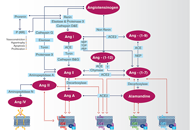 Angiotensin-(1-7) and Mas receptor in the brainOpen AccessReviewThe renin-angiotensin system (RAS) is a key regulator of blood pressure and electrolyte homeostasis. Besides its importance as regulator of the cardiovascular function, the RAS has also been associated to the modulation of higher [...] Read more.Natalia L. Rukavina Mikusic ... Mariela M. GironacciPublished: June 30, 2021 Explor Med. 2021;2:268–293
Angiotensin-(1-7) and Mas receptor in the brainOpen AccessReviewThe renin-angiotensin system (RAS) is a key regulator of blood pressure and electrolyte homeostasis. Besides its importance as regulator of the cardiovascular function, the RAS has also been associated to the modulation of higher [...] Read more.Natalia L. Rukavina Mikusic ... Mariela M. GironacciPublished: June 30, 2021 Explor Med. 2021;2:268–293
DOI: https://doi.org/10.37349/emed.2021.00046
This article belongs to the special issue Angiotensins—A Century of Progress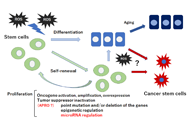 Reactive oxygen species may influence on the crossroads of stemness, senescence, and carcinogenesis in a cell via the roles of APRO family proteinsOpen AccessPerspectiveExcessive reactive oxygen species (ROS) may cause oxidative stress which is involved in aging and in the pathogenesis of various human diseases. Whereas unregulated levels of the ROS may be harmful, regulated basal level of ROS is [...] Read more.Yuka Ikeda ... Satoru MatsudaPublished: October 31, 2021 Explor Med. 2021;2:443–454
Reactive oxygen species may influence on the crossroads of stemness, senescence, and carcinogenesis in a cell via the roles of APRO family proteinsOpen AccessPerspectiveExcessive reactive oxygen species (ROS) may cause oxidative stress which is involved in aging and in the pathogenesis of various human diseases. Whereas unregulated levels of the ROS may be harmful, regulated basal level of ROS is [...] Read more.Yuka Ikeda ... Satoru MatsudaPublished: October 31, 2021 Explor Med. 2021;2:443–454
DOI: https://doi.org/10.37349/emed.2021.00062
This article belongs to the special issue Reactive Oxygen Species (ROS) in Pathophysiological Conditions -
